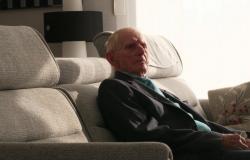The accident of this Saturday, November 9, 2024 was impressive. Two vehicles and three people were involved in a head-on collision just before entering Pouru-Saint-Remy. The conscious victims had to be extricated from their car. An operation which lasted a very long time because in total, the intervention of the 24 firefighters lasted more than 2 hours.
Operated for arm fractures
If the 20-year-old driver, alone in his vehicle, as well as the 57-year-old driver of the other car, were placed in relative emergency, the 59-year-old passenger was in absolute emergency. All three were transported to the Charleville hospital center.
The day after the accident, the news was reassuring for the passenger. “ His condition is not not alarmingshe will be operated on this afternoon (this Sunday, November 10, Editor’s note) because she suffers from fractures in both arms, one of which is open. », entrusts to The Ardennes a relative of the victim. As for the driver, in relative urgency, “ she is not far from to go out from the hospital ».
“It’s the black hole”
However, one question remains: what happened passé so that the cars collide? The family of the two motorists has no idea: “ For them it's the black hole », confides this same relative who was only able to communicate with them by telephone. “ The hospital does not accept visitors. »







